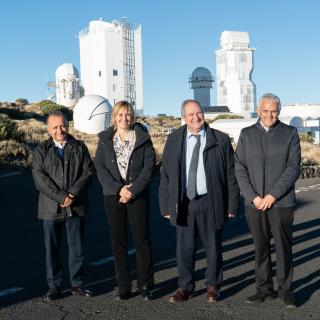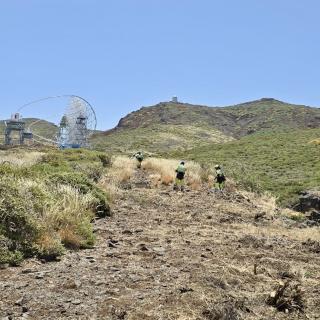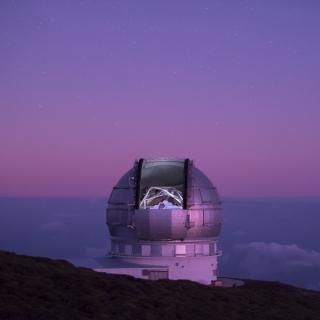It may interest you
-
 El ministro de Industria y Turismo, Jordi Hereu Boher, realizó una visita al Observatorio del Teide (OT), en Tenerife, donde pudo conocer de primera mano la labor científica, tecnológica y de innovación que se desarrolla en este enclave astronómico, referente internacional tanto en observación solar como nocturna. El ministro fue recibido por el director del Instituto de Astrofísica de Canarias (IAC), Valentín Martínez Pillet, y por la subdirectora, Eva Villaver Sobrino. A la visita también asistió el subdelegado del Gobierno en Santa Cruz de Tenerife, Jesús Javier Plata Vera, así comoAdvertised on
El ministro de Industria y Turismo, Jordi Hereu Boher, realizó una visita al Observatorio del Teide (OT), en Tenerife, donde pudo conocer de primera mano la labor científica, tecnológica y de innovación que se desarrolla en este enclave astronómico, referente internacional tanto en observación solar como nocturna. El ministro fue recibido por el director del Instituto de Astrofísica de Canarias (IAC), Valentín Martínez Pillet, y por la subdirectora, Eva Villaver Sobrino. A la visita también asistió el subdelegado del Gobierno en Santa Cruz de Tenerife, Jesús Javier Plata Vera, así comoAdvertised on -
 The teams of intervention and reinforcement for forest fires of the Government of the Canaries carried out trials at the roque de los Muchachos Observatory with participation by the Instituto de Astrofísica de Canarias On July 11th the Roque de los Muchachos Observatory was host to a very important trial relevant to the safety of the mountain tops of the Island of La Palma with participation by the Teams of Intervention and Reinforcement against Forest Fires (EIRIF) of the Canary Government, and the collaboration of the Instituto de Astrofísica de Canarias (IAC). The exercise centred on twoAdvertised on
The teams of intervention and reinforcement for forest fires of the Government of the Canaries carried out trials at the roque de los Muchachos Observatory with participation by the Instituto de Astrofísica de Canarias On July 11th the Roque de los Muchachos Observatory was host to a very important trial relevant to the safety of the mountain tops of the Island of La Palma with participation by the Teams of Intervention and Reinforcement against Forest Fires (EIRIF) of the Canary Government, and the collaboration of the Instituto de Astrofísica de Canarias (IAC). The exercise centred on twoAdvertised on -
 The Solar System research group at the Instituto de Astrofísica de Canarias (IAC) is participating in the international programme to keep a closet track of asteroid 2024 YR4. The aim is to determine its orbit with the highest possible precision before it stops being observable by ground based and satellite telescopes in April, and so improving our value of the probability that it will impact the Earth in 2032. In this context several telescopes of the Canary Observatories of the IAC are playing an outstanding role in this observing campaign: The Gran Telescopio Canarias (GTC) at the Roque deAdvertised on
The Solar System research group at the Instituto de Astrofísica de Canarias (IAC) is participating in the international programme to keep a closet track of asteroid 2024 YR4. The aim is to determine its orbit with the highest possible precision before it stops being observable by ground based and satellite telescopes in April, and so improving our value of the probability that it will impact the Earth in 2032. In this context several telescopes of the Canary Observatories of the IAC are playing an outstanding role in this observing campaign: The Gran Telescopio Canarias (GTC) at the Roque deAdvertised on
